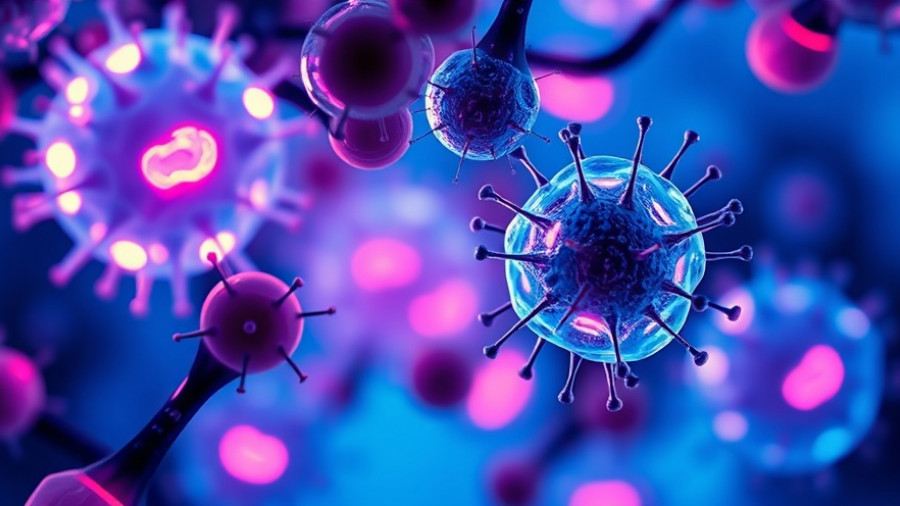
A New Dawn in Cancer Treatment: The Power of LED Light
In a groundbreaking development, researchers from The University of Texas at Austin and the University of Porto in Portugal have unveiled a revolutionary cancer therapy that harnesses the power of LED light and tin nanoflakes. This innovative treatment promises to kill tumor cells while safeguarding healthy ones, marking a significant advancement in cancer care. As cancer remains a leading cause of death globally, solutions like these offer hope for safer, more accessible treatments.
How It Works: The Science Behind the Therapy
This cutting-edge approach utilizes a near-infrared LED heating system that activates SnOx nanoflakes—ultra-thin tin flakes—to target cancer cells. Upon exposure to the LED light, these nanoflakes heat up the cancer cells to lethal temperatures without causing damage to surrounding healthy tissue. According to recent studies, the therapy is impressively effective, destroying up to 92% of skin cancer cells and around 50% of colorectal cancer cells within just 30 minutes. This fascinating fusion of technology and biology could redefine how we approach cancer treatment.
Advantages Over Traditional Treatments: Less Pain, More Precision
Unlike conventional cancer treatments such as chemotherapy and radiotherapy, which can inflict significant pain and side effects, this LED-based method offers a gentler alternative. The focus on preserving healthy cells not only alleviates suffering but also improves overall treatment outcomes. Researchers emphasize the need for treatments that minimize risk and harm, placing this new therapy at the forefront of cancer care solutions.
Bridging Global Research: The UT Austin-Portugal Collaboration
The partnership between The University of Texas at Austin and the University of Porto exemplifies international collaboration. By combining their expertise, researchers are pioneering techniques that may not only expand the reach of cancer therapies but also enhance their effectiveness. The UT Austin Portugal Program facilitated this collaboration, reflecting a commitment to advancing cancer treatments through shared knowledge and research.
Future Predictions: Cancer Treatment at Home
As research continues, the future looks promising. Artur Pinto, lead researcher from the University of Porto, envisions a scenario where patients could receive this innovative treatment in the comfort of their own homes. Imagine a portable device that could be applied post-surgery to eliminate remaining cancer cells, drastically reducing hospital visits and further risk of recurrence. This potential for home-based treatment could democratize access to cutting-edge healthcare in regions with limited medical resources.
Community Impact: A Dallas Perspective
Living in Dallas, with its vibrant healthcare scene, we can appreciate how such advancements could transform local cancer care. Dallas is home to several top-notch medical facilities and a strong network of healthcare professionals dedicated to improving patient outcomes. By integrating this innovative LED treatment into local practices, we could significantly enhance cancer care strategies right here in our city. Dallas lifestyle influencers and management clinics should keep their eyes on these emerging technologies, as they have the potential to shift how we approach wellness and healthcare.
Call to Action: Stay Informed and Engaged
As we witness the advent of novel cancer treatments, it is crucial to stay engaged with ongoing developments in medical technology. Share this information within your circles and advocate for awareness of these groundbreaking advancements in healthcare. Encouraging discussions can help broaden perspectives on cancer treatment options and patient care, especially for those navigating the complex healthcare landscape.
 Add Element
Add Element  Add Row
Add Row 



Write A Comment